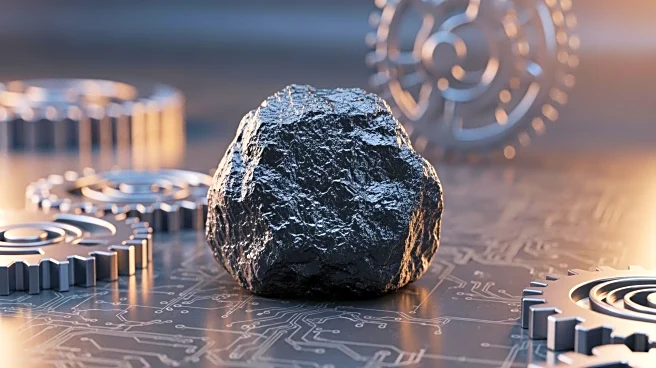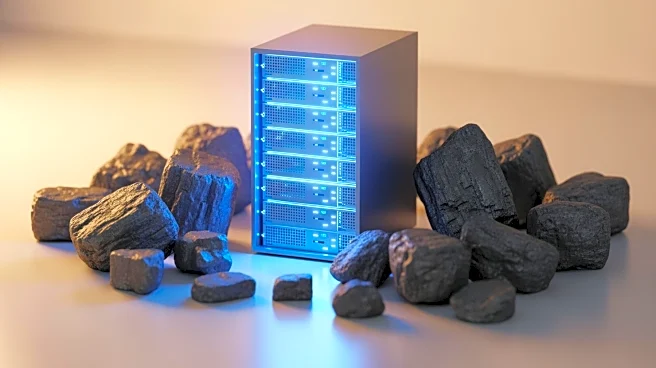What's Happening?
The U.S. coal industry, which has been in decline for over a decade, is experiencing a resurgence due to increased energy demands from artificial intelligence (AI), data centers, and domestic manufacturing.
This unexpected demand has led to a capacity crunch that renewable energy and natural gas alone cannot satisfy. Consequently, coal plants that were previously in 'maintenance-only mode' are now being called back into service. The focus has shifted from expansion to improving efficiency and reliability without significant capital investments. Environmental Energy Services (EES) has introduced the CoalTreat additive program, which optimizes fuel chemistry to enhance plant performance. This program has demonstrated significant improvements in plant reliability and efficiency, allowing coal plants to meet the new energy demands effectively.
Why It's Important?
The revival of coal plants in the U.S. highlights the ongoing challenges in balancing energy demands with environmental goals. As AI and manufacturing drive unprecedented electricity needs, coal remains a critical component of the energy mix, providing stability and reliability. This development underscores the complexities of transitioning to a fully renewable energy grid, as current renewable and gas capacities are insufficient to meet peak demands. The use of chemical additives like CoalTreat to improve coal plant efficiency without major upgrades presents a cost-effective solution for utilities. However, this resurgence also raises concerns about the environmental impact and regulatory challenges associated with increased coal usage.
What's Next?
As the demand for electricity continues to rise, particularly from AI and manufacturing sectors, coal plants are likely to remain a vital part of the U.S. energy landscape. Utilities may continue to invest in selective modernization and fuel chemistry optimization to enhance plant performance. The ongoing development of AI and data centers will likely drive further demand for reliable energy sources, potentially leading to more coal plants being brought back online. Stakeholders, including policymakers and environmental groups, will need to address the environmental implications of increased coal usage while balancing the need for energy security and economic growth.
Beyond the Headlines
The resurgence of coal in the U.S. energy sector highlights the tension between economic growth and environmental sustainability. While coal provides a reliable energy source to meet current demands, it also poses significant environmental challenges. The use of chemical additives to improve efficiency may mitigate some environmental impacts, but the long-term sustainability of coal as an energy source remains questionable. This situation underscores the need for continued investment in renewable energy technologies and infrastructure to reduce reliance on fossil fuels and achieve climate goals.











